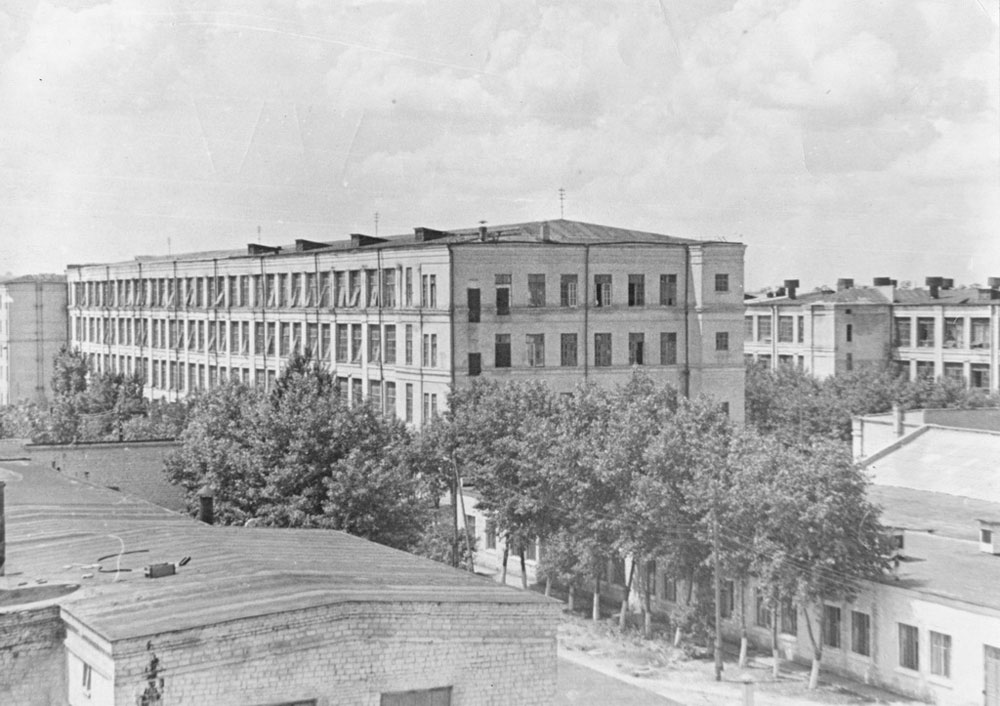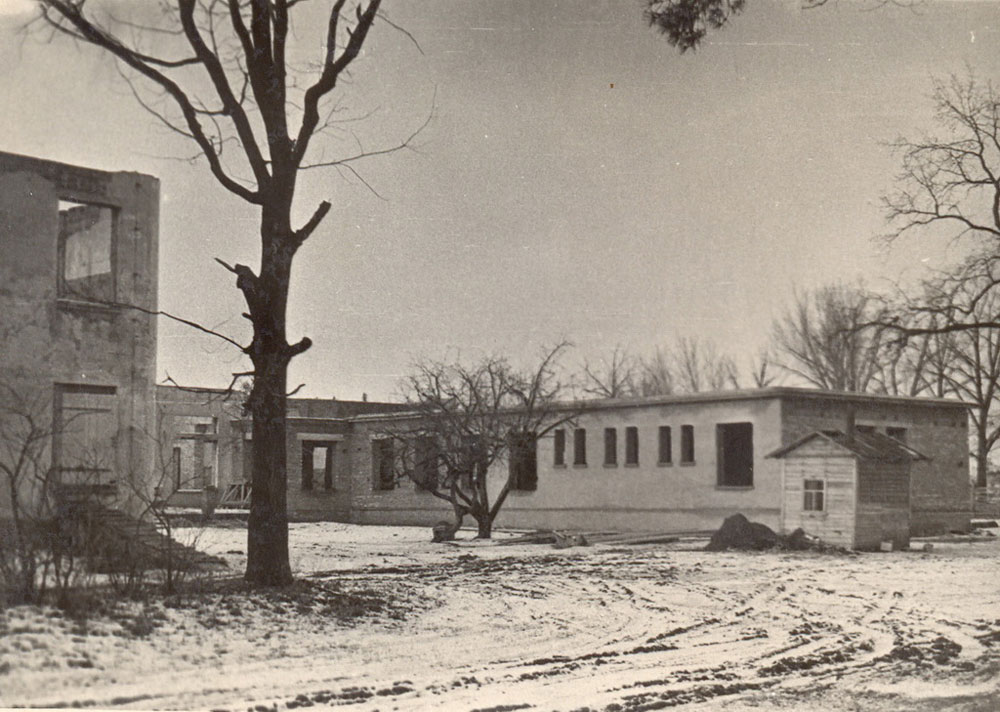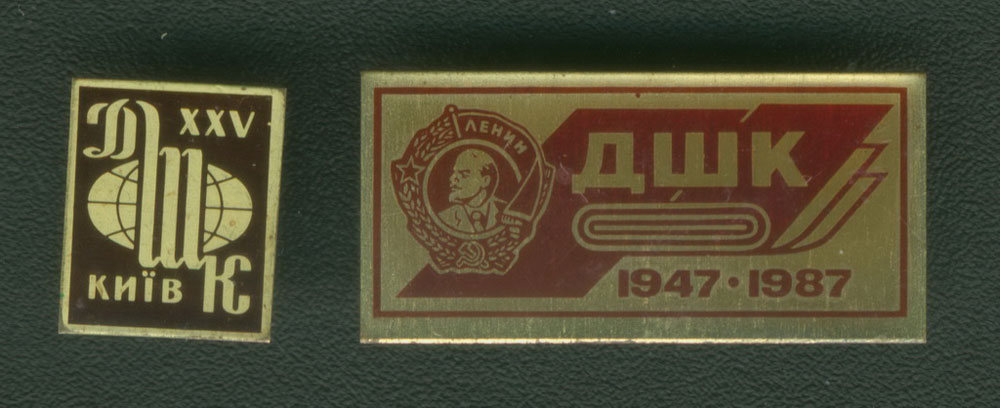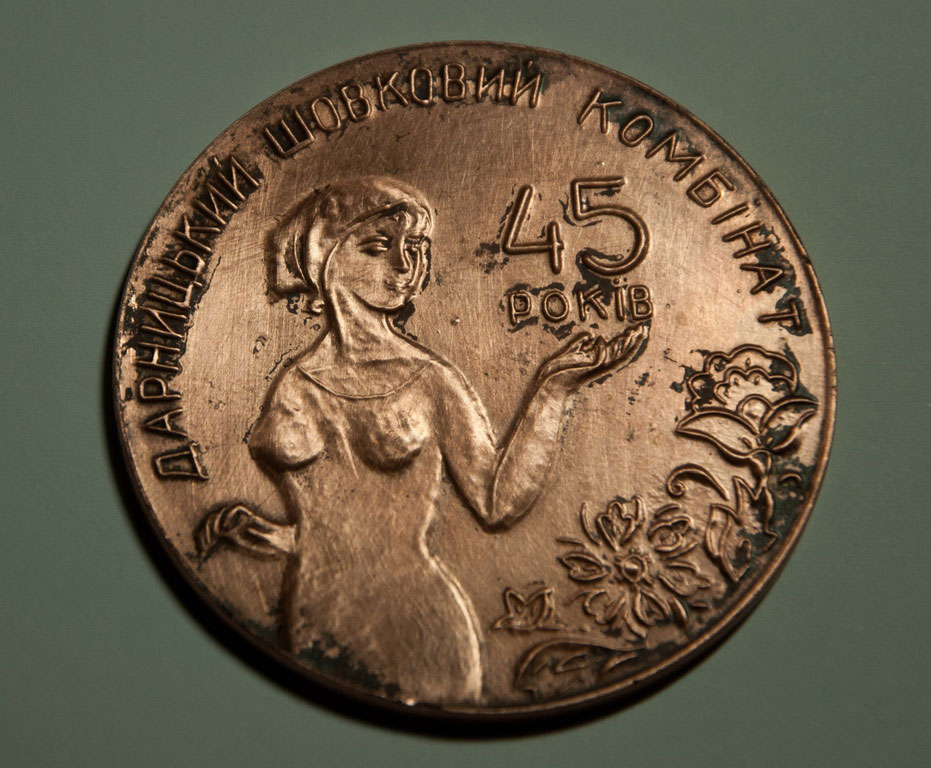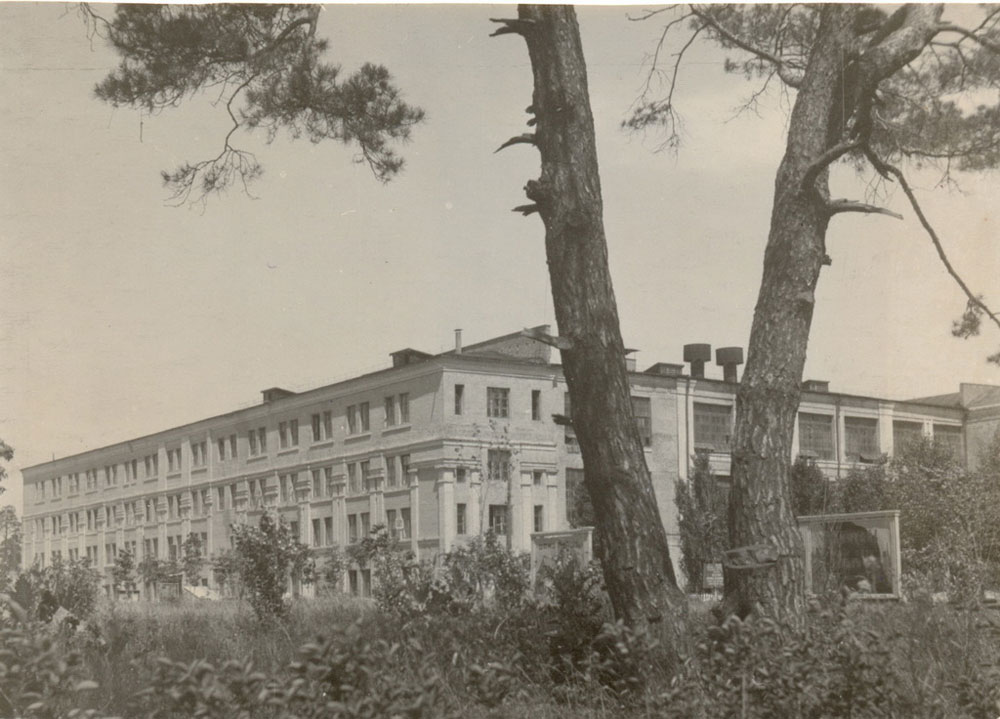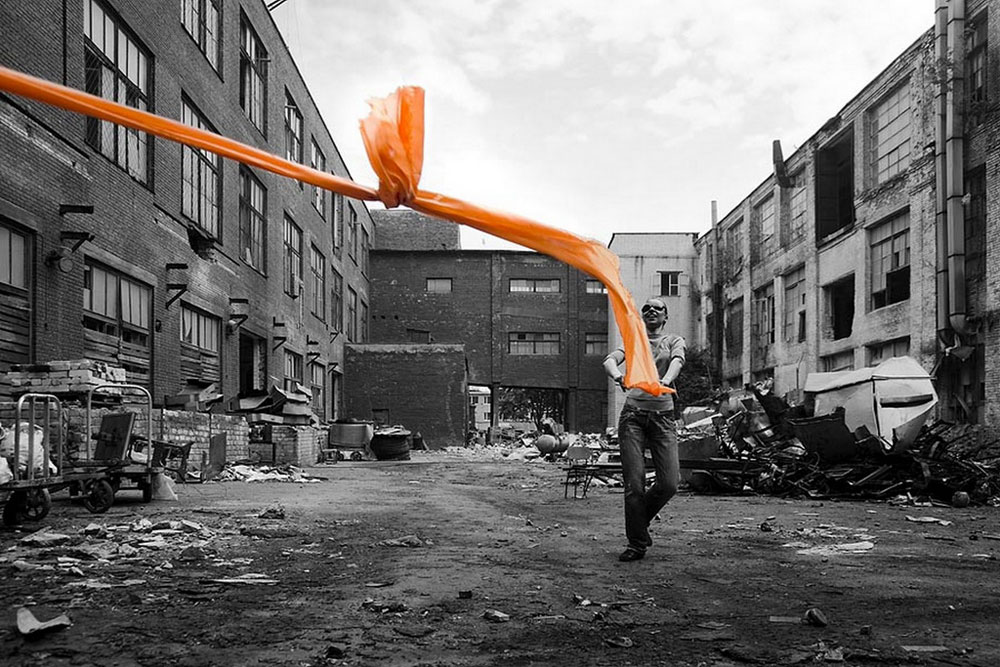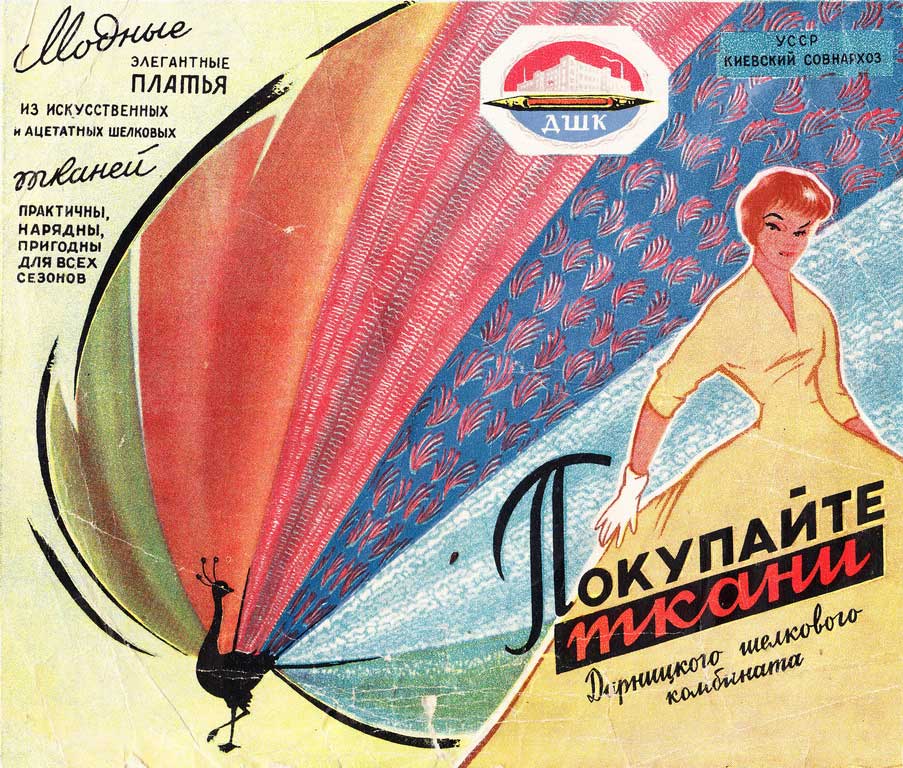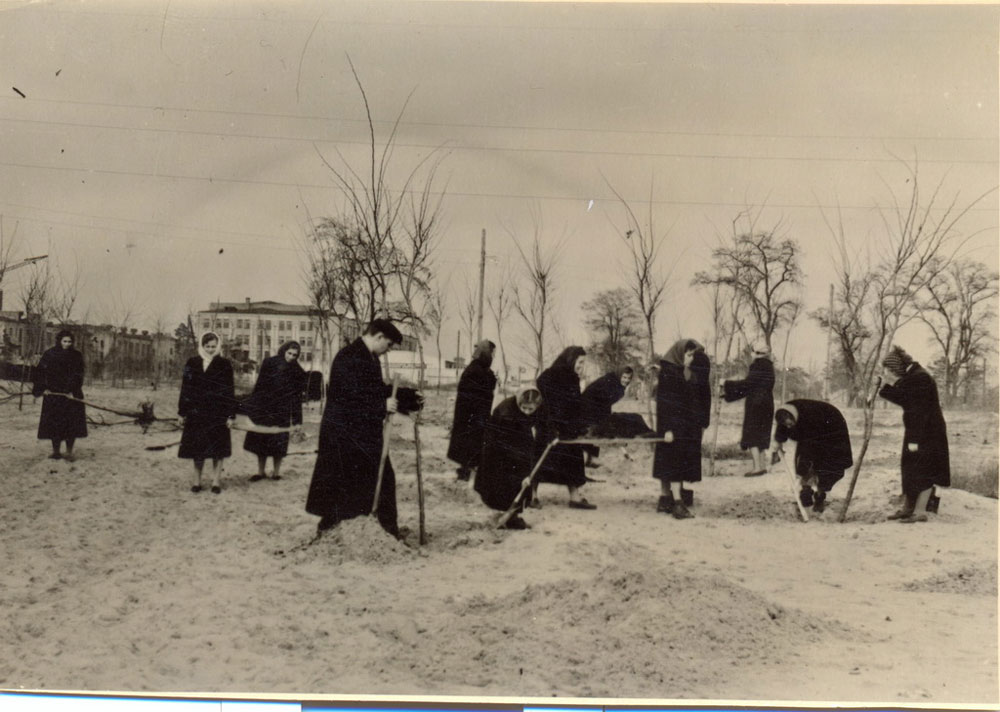…the fate of another left-bank giant, the Darnitsa Silk Mill, turned out to be no less deplorable. Its history is somewhat shorter in time than the biography of “Khimvolokno“, but on the fate of many residents of Kyiv, first of all, Darnichens he was no less influential.
After the end of the occupation, it was considered inappropriate to restore the completely destroyed fine cloth mill. Almost in its place, in January 1947, according to the order of the Minister of Textile Industry of the Ukrainian SSR, the construction of the Darnitsa Silk Mill with a capacity of 1000 looms with a production volume of 11.2 million meters of silk fabrics began. And although the production areas were not ready, equipment began to be delivered to the construction site already in November of the same year. By joint efforts, the first machine was brought onto a sheet of boiler iron into the dilapidated dormitory of “512,” and a place for training was immediately set up there. The remaining eight machines were temporarily installed in warehouses, from where the first meters of Darnitsa silk and twill came out in March 1948. Over the next year, 1949, 43 looms were already operating on temporary sites, with the help of which 279 thousand meters of silk were produced.
Working conditions at the enterprise were difficult, many workers lived poorly, so it is not surprising that the plant, to the great joy of its employees, was the first in the region to begin allocating plots in the gardening community at Resurrection Gardens. The factory committee supervised the development of the land, and the results were reported to the “general public” through the internal press or at open meetings – this was then common Soviet practice. The life of each family, the primary “unit of society,” was visible not only to neighbors in a communal apartment, but also under the control of fellow workers. When considering applications for the issuance of new plots, the names of those whose land was unkempt were voiced, and they spoke approvingly of the economic talents of hardworking gardeners.
Modern dachas should not be confused with plots in gardening partnerships of the 1950–1970s. At that time, land with an area of 6 acres was allocated to employees of city enterprises for planting gardens and vegetable gardening in order to help slightly increase the income of families who did not have the opportunity to buy vegetables, fruits and canned goods in stores. The construction of houses on such plots was prohibited; it was only possible to build a small wooden shed for storing equipment. The management of the partnerships, represented by special commissions headed by the chairman, vigilantly monitored this and forced them to demolish the extra meters. It is not surprising that even now some representatives of the older generation, out of old memory, call their children’s country palaces with the diminutive word “house”.
An active public position implied the participation of each worker in demonstrations, subbotniks, Sundays, as well as meetings and rallies, the decisions of which, for example, condemned the political line of hostile imperialist countries or supported the actions of the “fraternal countries of the socialist camp,” whose leaders often visited exemplary enterprises. Thanks to the Darnytsia Silk Mill, residents of Sotsgorod were almost the first in Ukraine to see the leader of the Cuban communists, Fidel Castro, with their own eyes in 1963. The commander began his voyage to the enterprises of Ukraine precisely from the Darnitsa weavers’ plant. Either he wanted to get acquainted with the best practices in order to use them in Cuba, or he generally wanted to make sure that the country made the right choice in favor of socialism. At least, after visiting the DShK, his motorcade moved towards Paton Bridge only after driving around Sotsgorod.
The artists of the plant searched for the Ukrainian ornament, which was used in the creation of fabrics, in all corners of Ukraine. This is evidenced by the names of the products: Periwinkle and Hutsulka, Konvaliya and Chervona rue, Marichka and Lesnaya pesnya, Cheremshina and Verbichka. It was from DShK that decorative fabrics were ordered for the Tarasova Gora hotels in Kanev and Moskva (now Ukraine) hotels in Kyiv. The drawings for this order were made by artists A. Lamakh, L. Zhogol, T. Ivanova, G. Lyakhov, N. Bondarenko and N. Griban.
In the late 1970s and early 1980s, the plant continued to expand and reconstruct, equipment was improved, twisting, warping and dyeing and finishing machines were modernized. In a short period of time, the third dyeing building was put into operation, the third weaving shop was completed, and a chemical water treatment and heating station came into operation. It seemed that DShK had a bright future ahead.
But in 1991, Soviet rule ended, the planned economy stopped, and dark days came for the Darnitsa Silk Mill. In the 1990s, the plant practically ceased operations, although small production has been revived these days. Since the beginning of 2016, information has been constantly updated on the company’s website, now the profile of its activities — printing on fabric in rolls, printing textile wallpaper, printing curtains, printing panels, printing bed linen, applying images to clothes and some other activities.
The fate of the territory that formerly belonged to DShK is traditional for Kyiv – a significant part went to the modern shopping and entertainment complex “Darynok”, and another fragment, empty until recently, became the site of the art factory “Platform”.
Where was the Darnitsa Silk Mill (DSHK)?
Popudrenka street, 88/3
Text and photographs provided by the publishing house “VARTO”. If you are interested in this material, then you can buy the book “Kiev Left Bank: from Sotsgorod to Bereznyaki” on the website varto.kiev.ua.
